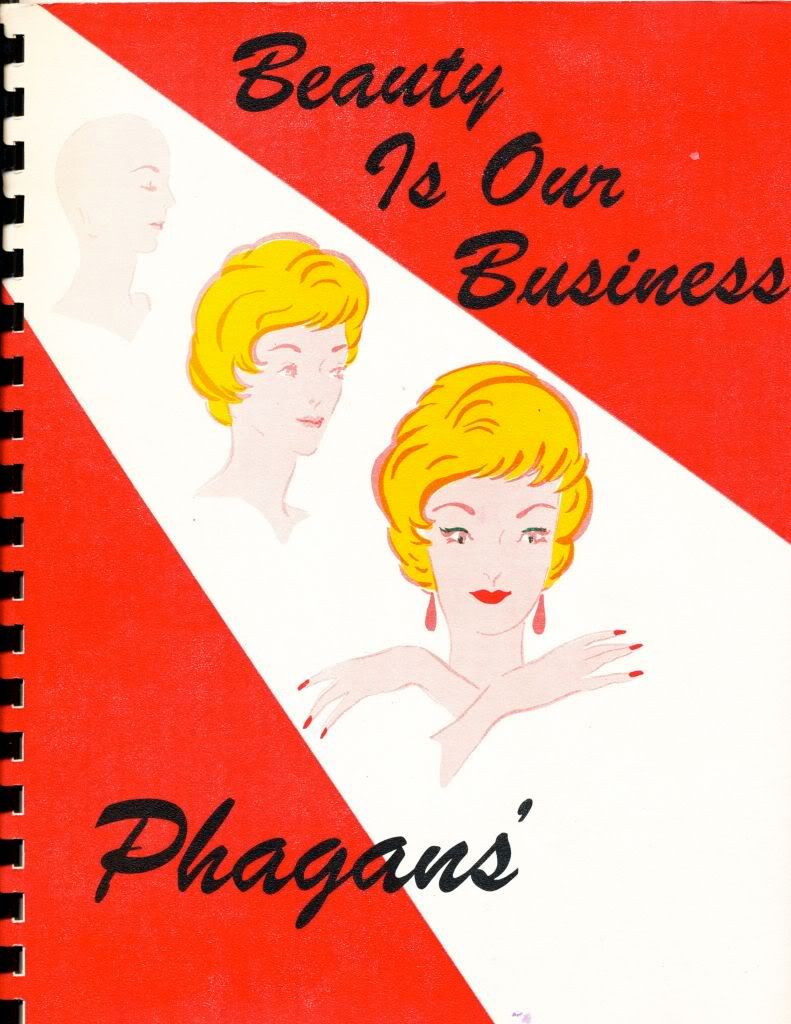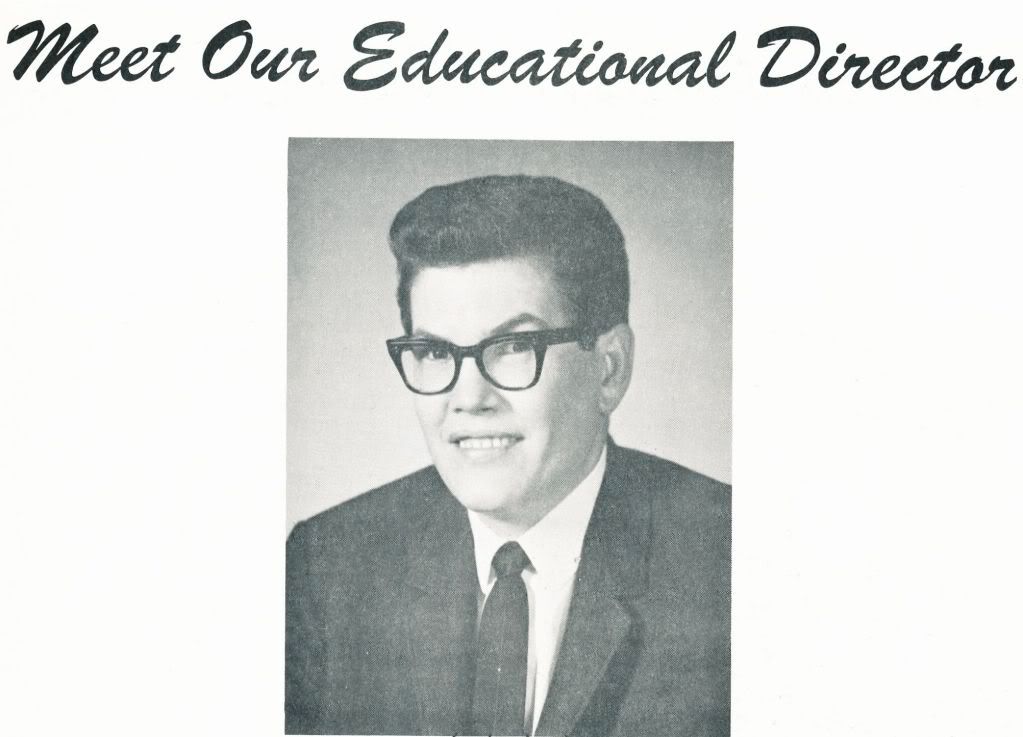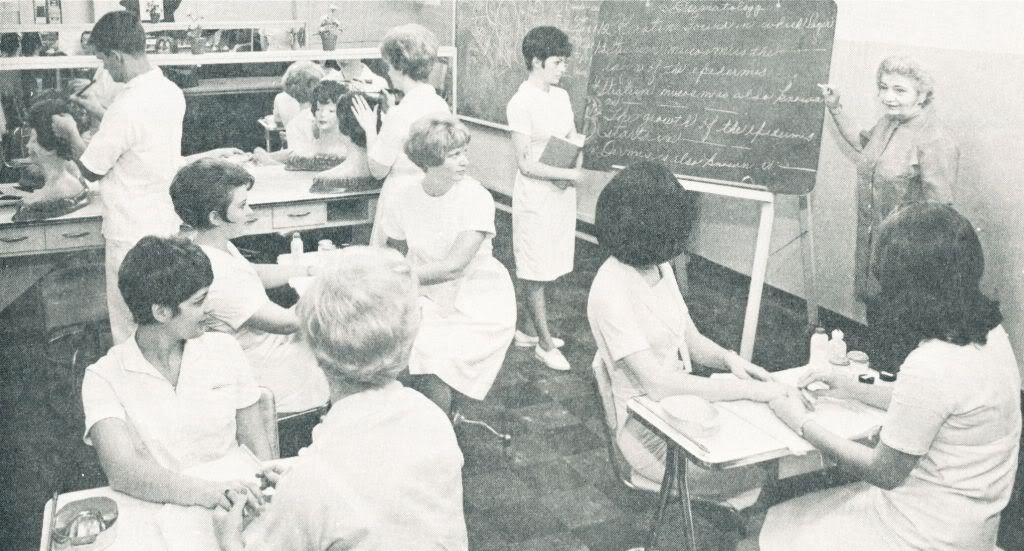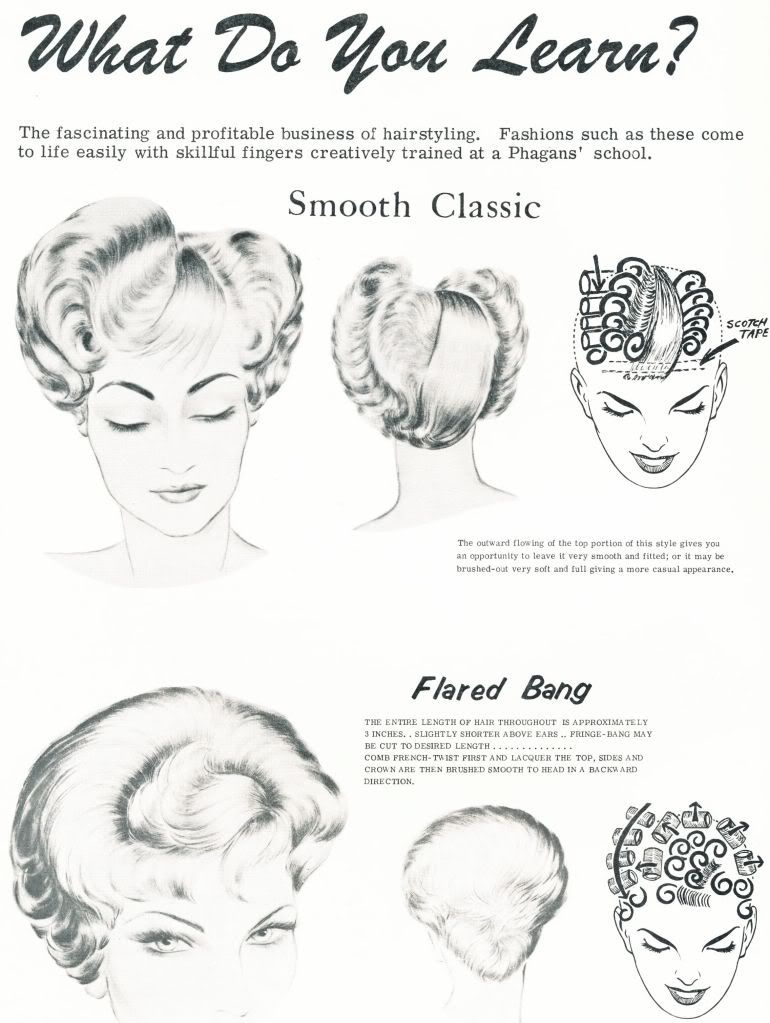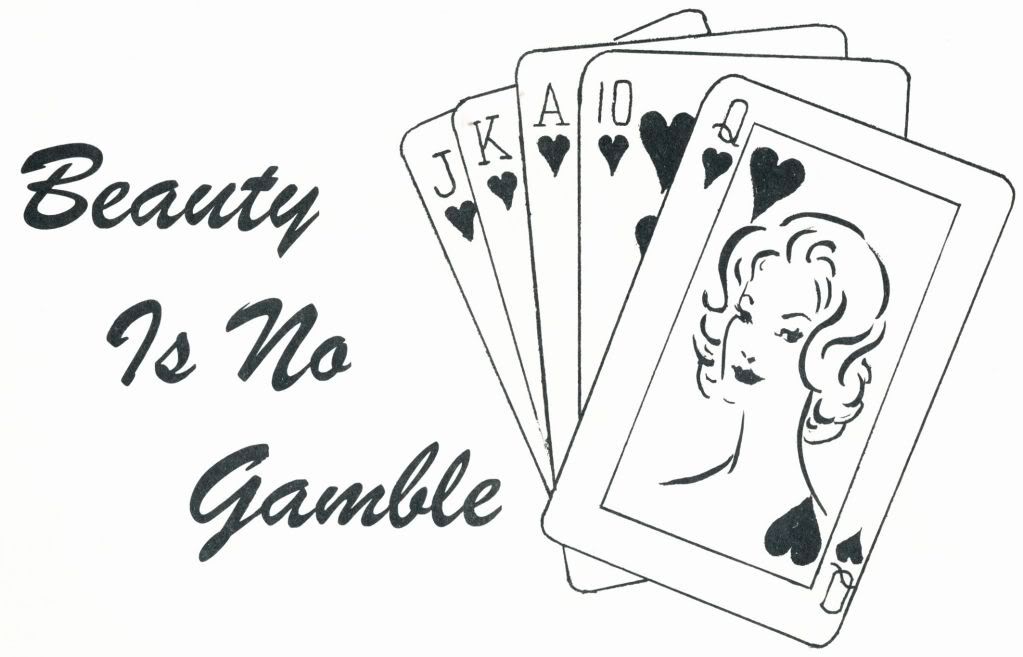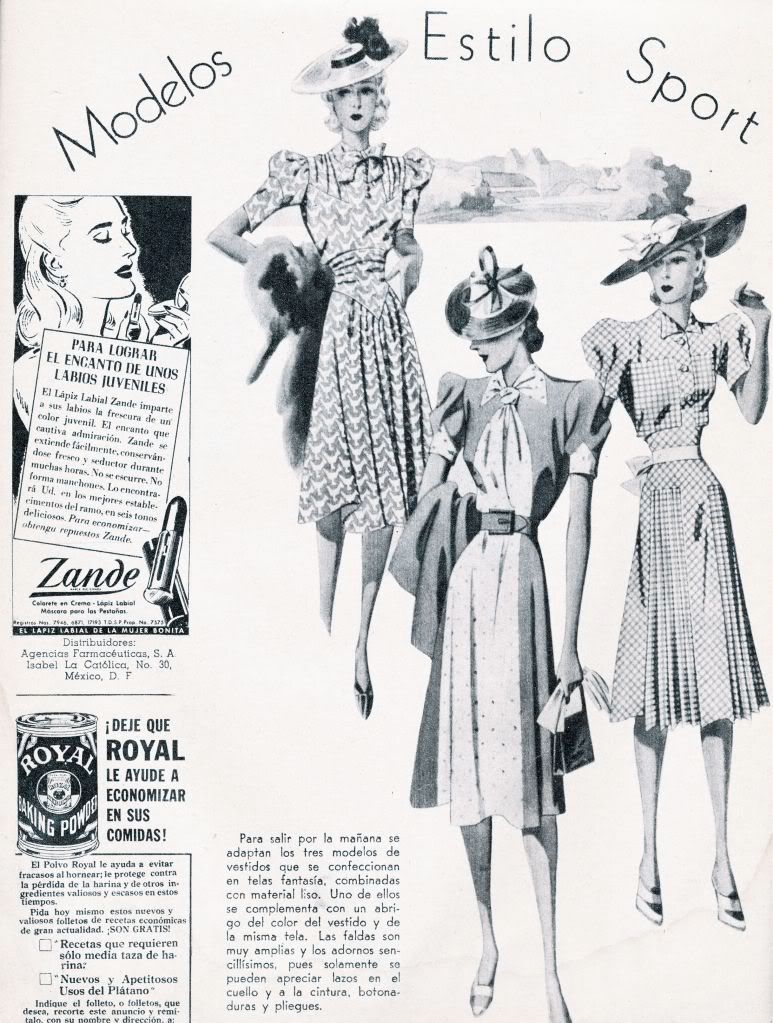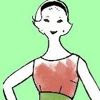This whole volume just makes you happy you live in today's age of washing machines and dryers...and local drycleaners!
"Following is a program that has proved its worth as a guide through the various steps of laundry work.
Monday:
1. Sort clothes.
2. Mend tears that will grow in washing.
3. Remove stains.
4. Soak soiled clothes.
5. Get equipment ready.
Tuesday:
1. Heat water.
2. Make soap solution.
3. Fill tub or washer and wash in succession (changing suds when necessary):
Table linen
Bed linen
Towels
Body linen
Handkerchiefs
Soaked clothes
4. Boil by putting clothes in cold water and letting them slowly come to boiling point.
5. Make starch.
6. Look over articles, especially if a washer has been used, to see whether further rubbing is necessary.
7. Rinse in 2 or 3 waters.
8. Blue, dipping and wringing each piece separately.
9. Starch clothes needing average stiffness, changing starch as often as necessary.
10. Hang out pieces.
11. Wash colored clothes, setting color, washing, rinsing 2 or 3 times, starching; and hang out to dry.
12. Wash cotton stockings, rinse, and hang to dry.
13. Take down clothes, piece by piece, fold and lay in the basket.
14. Dampen and roll up.
15. Wash any silk underwear, embroidery pieces, or colored clothes that must be ironed immediately, and iron. Also, wash flannels and wool or silk stockings.
Wednesday:
I . Do heavv starching.
2. Step No. 15, under Tuesday, may be left until now, if desired.
3. Iron.
4. Air.
5. Put away.

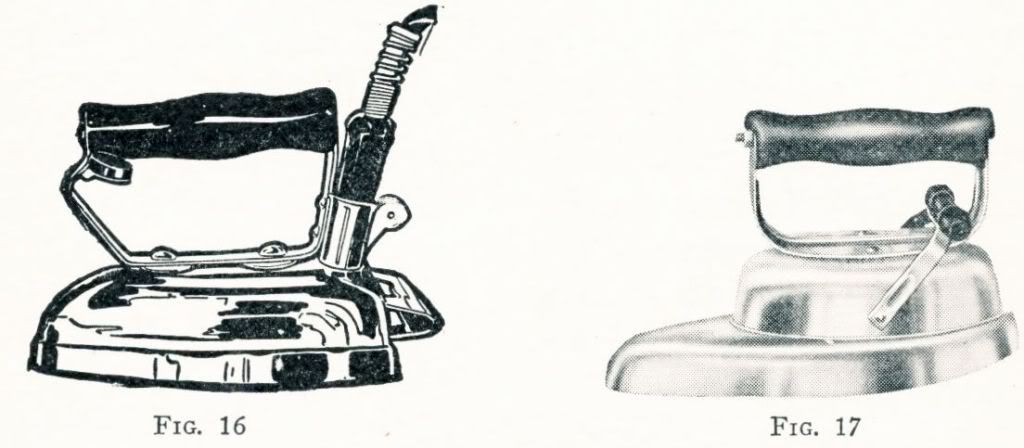
"Irons.-There are various types of irons; the old-fashioned, stove-heated flat, or sad, iron made entirely of iron, irons with removable wooden handles, also electric, gas, gasoline, charcoal, and alcohol irons. Although the old-fashioned, stove-heated iron can do its work efficiently, it cannot bring the comfort and ease to an ironer that a self-heating iron can. The woman who employs a self-heating iron does not have to consider saving steps, for instead of ironing near a hot stove or going back and forth to exchange a cold iron for a hot one, she can iron in one spot, and that a comfortable one. The type chosen, however, will depend on the facilities available for heatlng, but it is well to know the outstanding characteristic of each type."

"To protect large pieces, such as table-clothes from falling to the floor, a deep pocket of muslin may be attached to each side of the ironing sheet so that it extends from end to end of the board and within 6 or 8 inches of the floor, as in Fig. 13."
This next part comes under the Dry Cleaning portion of our book, I chose two tricky tasks that you might need to know about. Cleaning Kid Gloves and Feathers.
" Cleaning Kid Gloves - Kid gloves that are not seriously discolored or stained with perspiration may be easily cleaned by immersing in several gasoline baths, as for garment cleaning, but, if necessary, they may be handled more vigorously than fabrics."


"Fig. 11 shows the warm, gasoline, soap bath in which the gloves are first immersed. Allow them to remain in this bath a few hours to loosen the dirt; then rub between the hands and scrub with a stiff brush, as in Figs. 12 and 13, or rub on a small washboard."


"Next, rinse thoroughly and wipe with a soft cloth. If necessary, dry further with Turkish towels, as in Fig. 14, and put on glove stretchers. Gloves should not be dried too rapidly, as this tends to make them stiff, but they may be dried as much as possible with towels and then laid in a warm place to finish drying. When thoroughly dry, shape them carefully and smooth them with the hands, as illustrated in Fig. 15."
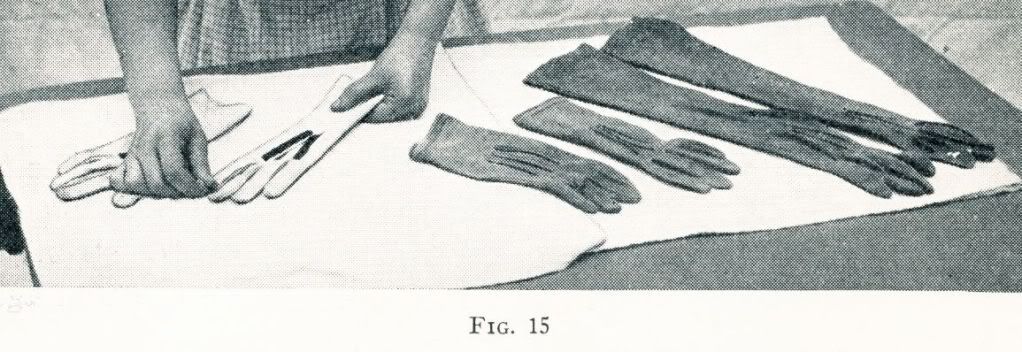
Do you have your Gasoline, Wheat Flour and Corn Starch ready? Let's clean feathers!
"Cleaning White or Light-Colored Feathers - When cleaning feathers, aigrettes, and paradise plumes that are white or light in color, a large china or earthenware bowl, as shown in Fig. 16, should be used. Dry the bowl thoroughly, and pour into it a pint of clean gasoline. Wash the feather by sousing it up and down thoroughly.
It is generally unnecessary to rub the flues of the feathers, but if you do rub them, start at the point where the flues are joined to the stem of the feather and move the tips of the fingers outwards along the flues, pressing lightly. When the tips of the flues are reached, lift the hand and start again at the stem. Do not rub the flues back and forth, but move the fingers always in the same direction; that is, outwards from the stem to the tips of the flues.
Continue the operation until all of the flues on both sides of the stem are washed clean. Then pick up the feather and draw it through the lightly closed fist, in the manner shown in Fig. 16, in order to squeeze out most of the gasoline from the flues. Repeat this operation several times, until the greater part of the gasoline has been squeezed out."

"When the feather has been washed thoroughly in the manner just described, throw away the dirty gasoline used for washing it, and wipe the bowl clean and dry. Pour in a pint of fresh gasoline, and to it add 2 tablespoonfuls of wheat flour. Stir the flour into the gasoline until a smooth, thin paste is formed. Then stir the feather around or lay it in the paste and rub the flues lightly from the stem toward the ends with the tips of the fingers, in exactly the same manner as described for cleaning the feather the first time. When the feather has been washed completely in this way, draw it through the closed hand to squeeze out the gasoline, and shake it in the air until the remaining gasoline has evaporated and the feather is almost dry, a process that will require from 2 to 5 minutes.
When the feather is practically dry, it must be rolled in clean corn starch. To do this, spread a piece of tissue paper flat on the table and sprinkle it lightly but evenly with corn starch. Roll the feather back and forth in the corn starch by twisting the stem until it is well covered. Then shake the feather to remove the loose particles of starch adhering to the flues, and the cleaning process is finished.
The advantage of this method of cleaning is that it will not take the curl out of the feather, as in the case of soap and water, but it must be remembered that this process is for cleaning white and light colored feathers only."
